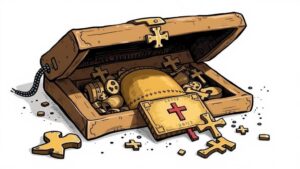Spotting Map Clues in Artifacts Left Behind by Spanish Conquistadors
Spotting Map Clues in Artifacts Left Behind by Spanish Conquistadors
The Spanish Conquistadors, driven by the quest for gold and glory in the New World, left behind a myriad of artifacts that possess significant archaeological, historical, and cultural value. These artifacts not only provide insight into the Conquistadors’ lives but also serve as vital clues for modern historians and archaeologists attempting to piece together the complex narratives of the contact between Spanish explorers and indigenous populations. This article delves into various artifacts and how they can be interpreted as map clues to understand the route and impact of the Spanish Conquistadors.
The Role of Artifacts in Historical Mapping
Artifacts play a crucial role in reconstructing historical narratives, especially those pertaining to the journeys of the Spanish Conquistadors throughout the Americas. When examined in context, these relics can be linked to specific locations, providing information about the paths traveled, the settlements established, and the interactions with indigenous peoples. For example, a particular type of Spanish coin found in a certain area may indicate a trading post or a camp where Conquistadors temporarily resided.
Types of Artifacts and Their Significance
- Coins: Spanish coins, known as reales, often serve as indicators of economic activity. The discovery of these coins in a specific region can suggest trade routes or Spanish settlements, thus creating a clearer map of Conquistador activity.
- Weapons: Artifacts such as swords and firearms provide evidence of military presence, complementing the historical accounts of conflicts with indigenous groups. excavation sites of these weapons can highlight strategic locations of battles or fortresses that played a role in the Conquistadors campaigns.
- Ceramics: Spanish pottery discovered alongside indigenous artifacts can reveal interactions between cultures, such as trade or even coercion. The stylistic features of the ceramics can help date the artifacts and pinpoint geographical locations of contact.
Case Studies: Mapping Clues from Archaeological Findings
One prominent case in this context involves the exploration of the Florida peninsula, where artifacts left by the Conquistador Juan Ponce de León have been studied extensively. In the early 1500s, de León is believed to have landed on the coast of Florida, and the subsequent excavation of Spanish ceramics and tools has allowed historians to create a more detailed map of his route.
Another significant example can be found in Mexicos Tenochtitlán, the Aztec capital. analysis of imported Spanish weapons and armor recovered from excavation sites reveals much about the military strategies employed by Hernán Cortés. By mapping these findings in conjunction with historical texts, researchers have been able to trace Cortés movements and understand the wider implications of the Conquistadors presence in the region.
Challenges in Interpreting Artifacts
Despite their importance, interpreting artifacts as map clues presents several challenges. The volume of cultural exchange between Spanish explorers and indigenous populations may obscure the origin of some artifacts. Also, the degradation of materials over time complicates the dating of discoveries. Archaeologists must employ rigorous techniques, such as stratigraphy and radiocarbon dating, to ensure that the context of the findings is accurately understood.
Also, potential biases exist in the historical records left by the Conquistadors, which must be taken into consideration when analyzing artifacts. For example, the accounts often overemphasize triumphs while downplaying indigenous resistance or alternative narratives.
Future Directions for Research
The ongoing archaeological work focusing on the artifacts of Spanish Conquistadors promises to uncover new insights and refine existing maps of their movements. Technological advancements, such as Geographic Information Systems (GIS), can aid in creating more accurate representations of Conquistador routes and settlements. Also, interdisciplinary approaches–combining archaeology, history, and indigenous perspectives–will enrich our understanding of this complex narrative.
Conclusion
Spotting map clues in artifacts left behind by Spanish Conquistadors is not merely an exercise in historical reconstruction but a vital endeavor to comprehend the intricate relationships that shaped the New World. By carefully analyzing various types of artifacts, utilizing contemporary technological methods, and incorporating multiple perspectives, scholars can continue to unravel the stories behind these historic encounters. legacy of the Spanish Conquistadors remains deeply embedded in the archaeological record, providing a profound understanding of our shared history.


